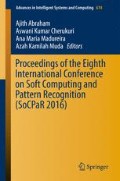Abstract
Now a days we are sharing large number of multimedia contents along with copyright protection. Assurance of proprietorship is needed because large increment in duplicates and to reduce illegal redistribution. Fingerprint mechanism is categorized in to three symmetric, asymmetric and anonymous. They have used traitor tracing protocol to identify illegal re-distributor. It uses complex graph to search for traitor tracing, and also it requires the participation of several honest buyers and anonymous communication through proxies. Drawbacks considered are justified by maintaining the transaction monitor and Symmetric Keys. Transaction monitor stores an encrypted version of the fingerprint for each buyer to trace an illegal re-distributor in the tracing protocol. Symmetric keys are maintained in the Data base and these Keys are not transmitted through proxies. For this all the user ought to be online. It is efficient and scalable fingerprint mechanism for p2p based fingerprinting system.
Access this chapter
Tax calculation will be finalised at checkout
Purchases are for personal use only
References
Boneh, D., Shaw, J.: Collusion-secure fingerprinting for digital data. In: Proceedings 15th Annual International Cryptology Conference Advances Cryptology, pp. 452–465 (1995)
Bo, Y., Piyuan, L., Wenzheng, Z.: An efficient anonymous fingerprinting protocol. In: Proceedings International Conference on Computer Intelligence Security, pp. 824–832 (2007)
Camenisch, J.: Efficient anonymous fingerprinting with group signatures. In: Proceedings 6th International Conference Theory Applications Cryptology Information Security: Advanced Cryptology, pp. 415–428 (2000)
Chang, C.-C., Tsai, H.-C., Hsieh, Y.-P.: An efficient and fair buyer-seller fingerprinting scheme for large scale networks. Comput. Secur. 29, 269–277 (2010)
Chaum, D.L.: Untraceable electronic mail, return addresses, and digital pseudonyms. Commun. ACM 24, 84–90 (1981)
Cox, I.J., Miller, M.L., Bloom, J.A., Fridrich, J., Kalker, T.: Digital Watermarking and Steganography. Morgan Kaufmann, Burlington (2008)
Domingo-Ferrer, J., Megías, D.: Distributed multicast of fingerprinted content based on a rational peer-to-peer community. Compute. Commun. 36, 542–550 (2013)
Fallahpour, M., Megías, D.: Secure logarithmic audio watermarking scheme based on the human auditory system. Multimedia Syst. 20, 155–164 (2014)
Katzenbeisser, S., Lemma, A., Celik, M., van der Veen, M., Maas, M.: A buyer-seller watermarking protocol based on secure embedding. IEEE Trans. Inf. Forensics Security 3(4), 783–786 (2008)
Kuribayashi, M.: On the implementation of spread spectrum fingerprinting in asymmetric cryptographic protocol. EURASIP J. Inf. Security 2010, 1:1–1:11 (2010)
Samuel, A., Sarfraz, M.I., Ghafoor, A.: A framework for composition and enforcement of privacy-aware and context-driven authorization mechanism for multimedia big data. IEEE Trans. Multimedia 17(9), 1484–1494 (2015)
Prins, J.P., Erkin, Z., Lagendijk, R.L.: Anonymous fingerprinting with robust QIM watermarking techniques. EURASIP J. Inf. Security 2007, 20:1–20:7 (2007)
Megıas, D., Domingo-Ferrer, J.: Privacy-aware peer-to-peer content distribution using automatically recombined fingerprints. Multimedia Syst. 20, 105–125 (2014)
Megıas, D., Domingo-Ferrer, J.: DNA-inspired anonymous fingerprinting for efficient peer-to-peer content distribution. In: Proceedings IEEE Congress Evolutionary Computation, pp. 2376–2383, June 2013
Author information
Authors and Affiliations
Corresponding authors
Editor information
Editors and Affiliations
Rights and permissions
Copyright information
© 2018 Springer International Publishing AG
About this paper
Cite this paper
Gopathoti, S.L., Mantri, V. (2018). Prevention of Illegal Content Sharing in Peer to Peer Systems. In: Abraham, A., Cherukuri, A., Madureira, A., Muda, A. (eds) Proceedings of the Eighth International Conference on Soft Computing and Pattern Recognition (SoCPaR 2016). SoCPaR 2016. Advances in Intelligent Systems and Computing, vol 614. Springer, Cham. https://doi.org/10.1007/978-3-319-60618-7_23
Download citation
DOI: https://doi.org/10.1007/978-3-319-60618-7_23
Published:
Publisher Name: Springer, Cham
Print ISBN: 978-3-319-60617-0
Online ISBN: 978-3-319-60618-7
eBook Packages: EngineeringEngineering (R0)

